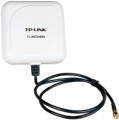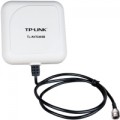The type of connector, as well as its number, used to connect the antenna to a router, modem or other equipment.
—
N-connector. A coaxial connector with a characteristic round shape, developed back in 1940, known primarily as a standard socket for connecting antennas to a TV. However, in Wi-Fi and 3G equipment, a 50 Ohm impedance connector is used — it has a thinner centre contact than the 75-ohm "television" one, despite the fact that otherwise both connectors are identical. This is not a problem if the antenna is connected to external network equipment with a “native” cable, however, when using third-party wires, care must be taken: when connecting different types of connectors, they may be damaged, despite the fact that the connectors themselves are not always marked. However, this is also not recommended for electrical reasons (see "Characteristic impedance").
—
RP-TNC. A high-frequency connector that appeared somewhat later than the N-connector described above (in the late 1950s). Similar to it in size, it also has a coaxial design, but it is regularly made for a wave impedance of 50 Ohms, which made it convenient for Wi-Fi and 3G equipment. (There are also 75-ohm versions, but they are rare and have obvious differences from the standard ones).
—
RP-SMA. A further development of coaxial high-frequency connectors created in the 1960s
.... Like RP-TNC, it is standardly produced for a nominal resistance of 50 Ohms, but it is more miniature (almost 3 times smaller in diameter), which makes it well suited for compact routers and modems. At the same time, despite its small size, it provides a completely reliable and high-quality connection.
— MMCX. Coaxial antenna connector, which is small in size — the inner diameter of the socket is slightly more than 2.5 mm. Due to this, such connectors are widely used in various portable equipment. MMCX are designed for impedance of 50 ohms and frequency range of 0 – 6 GHz.
— TNC. The "original version" of the RP-TNC described above; appeared first, and later RP-TNC was created on its basis. Both interfaces are identical in size and general design of the connectors, but they have opposite polarity and a different distribution of contacts: in TNC, the “male” (male) contact is located on the plug, “mother” (female) is in the socket, in RP-TCN — vice versa. For a number of reasons, RP-TNC turned out to be more preferable for Wi-Fi and 3G equipment, and the original TNC was not widely used.
— FME. 50 ohm coaxial interface similar in size to RP-TNC but not identical. It supports frequencies up to 2.4 GHz, which is why it is found mainly in antennas for mobile communications and universal models.
— CRC9. Miniature coaxial interface, found mainly in 3G / LTE modems and antennas for them; however, it can also be installed in universal antennas. The connector diameter is only about 2 mm, which makes it easy to use in portable equipment. The cable under CRC9 often has an L-shaped plug to increase reliability.
